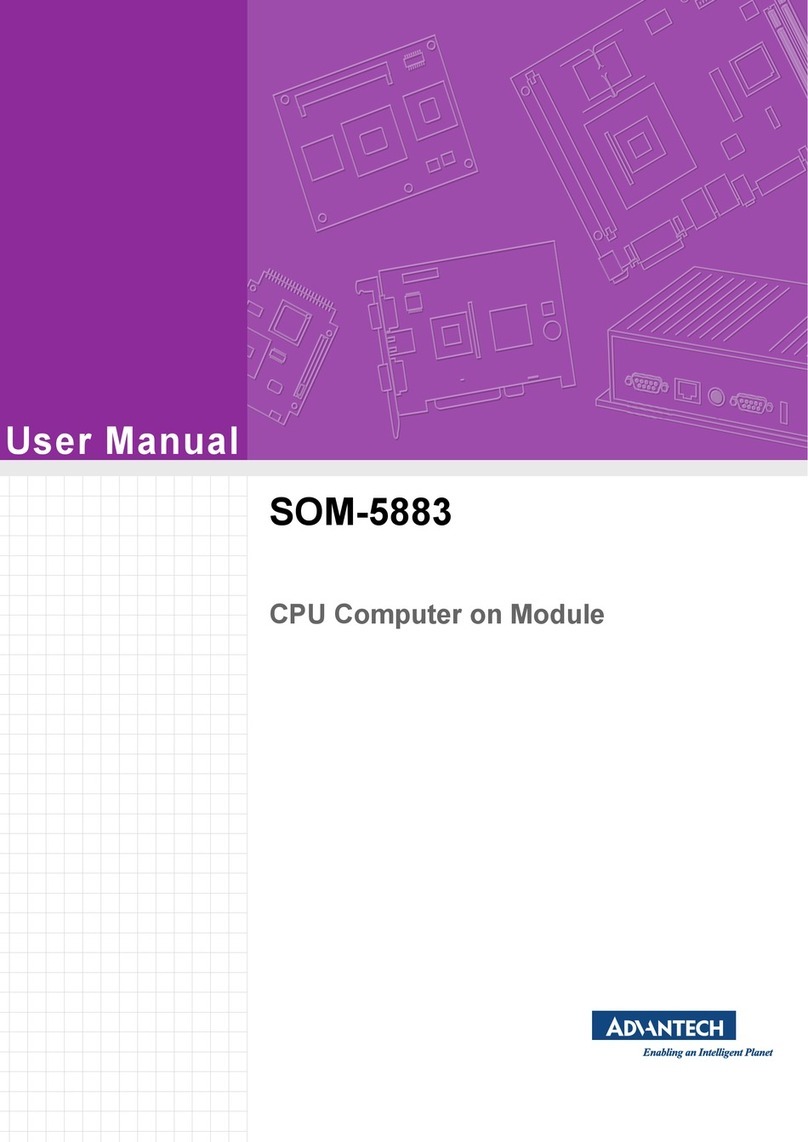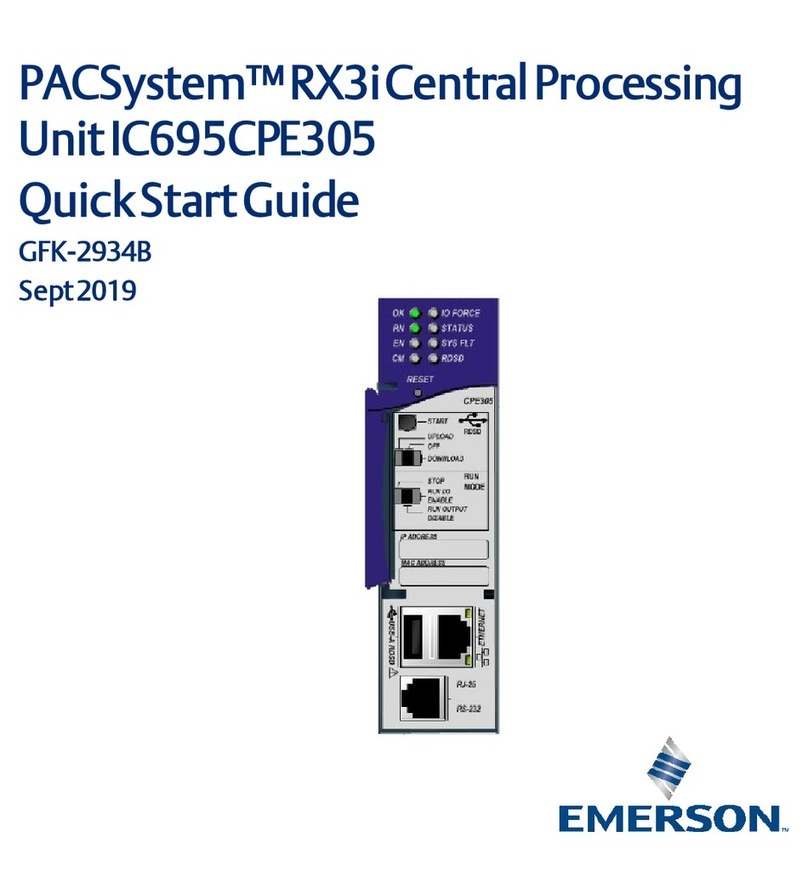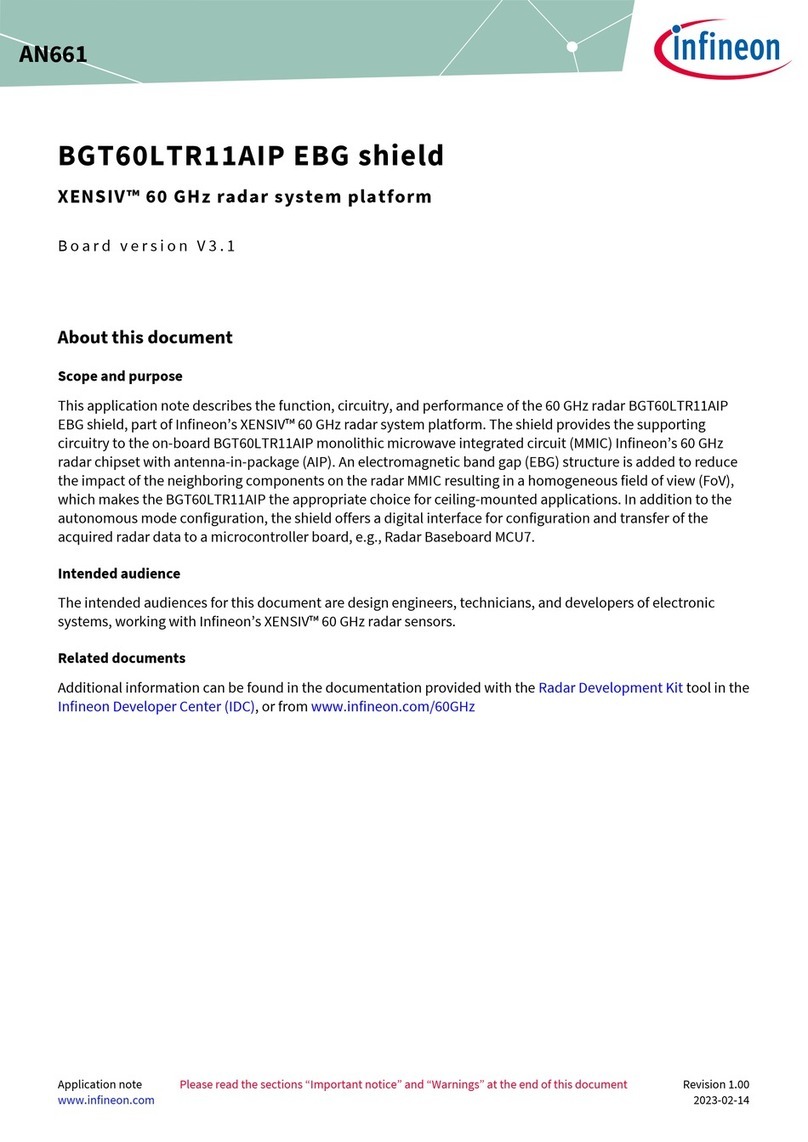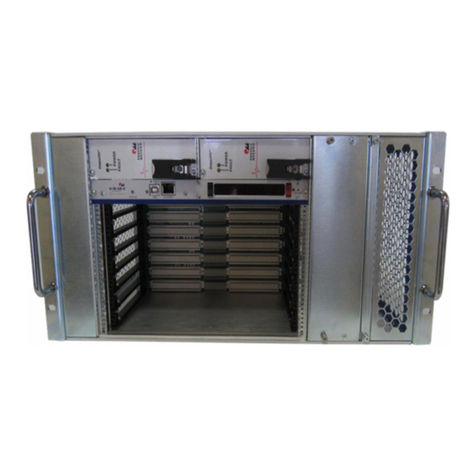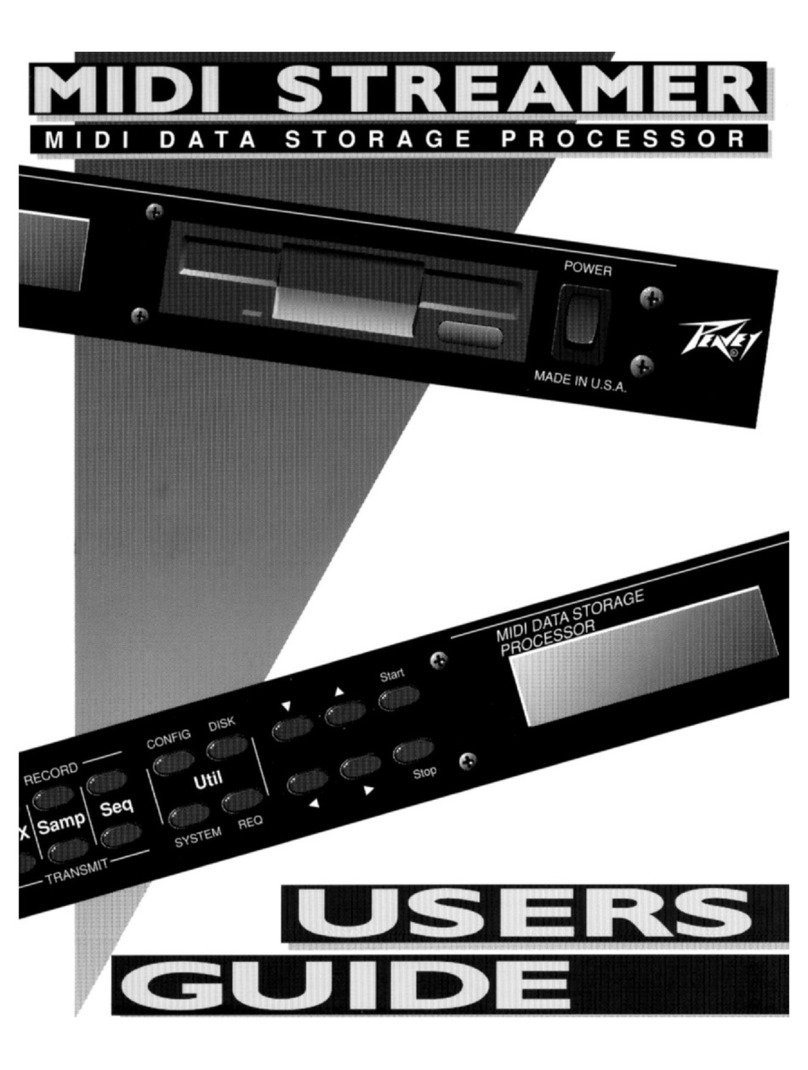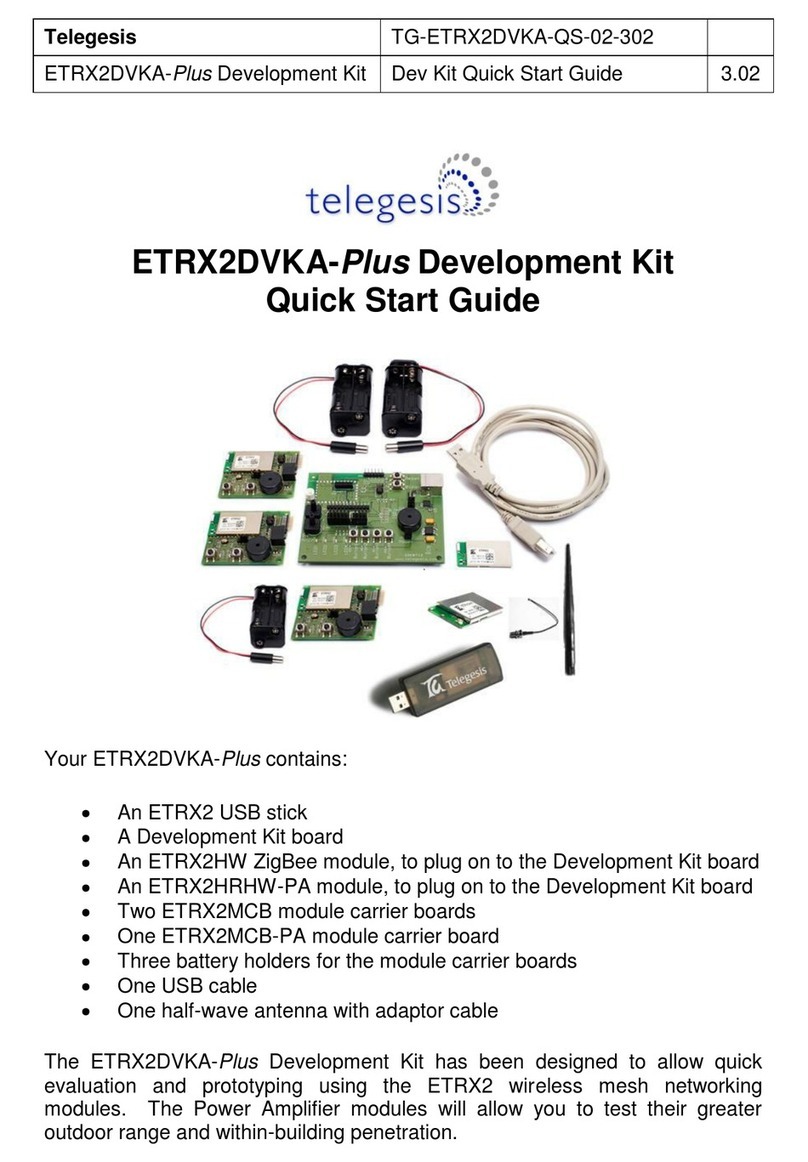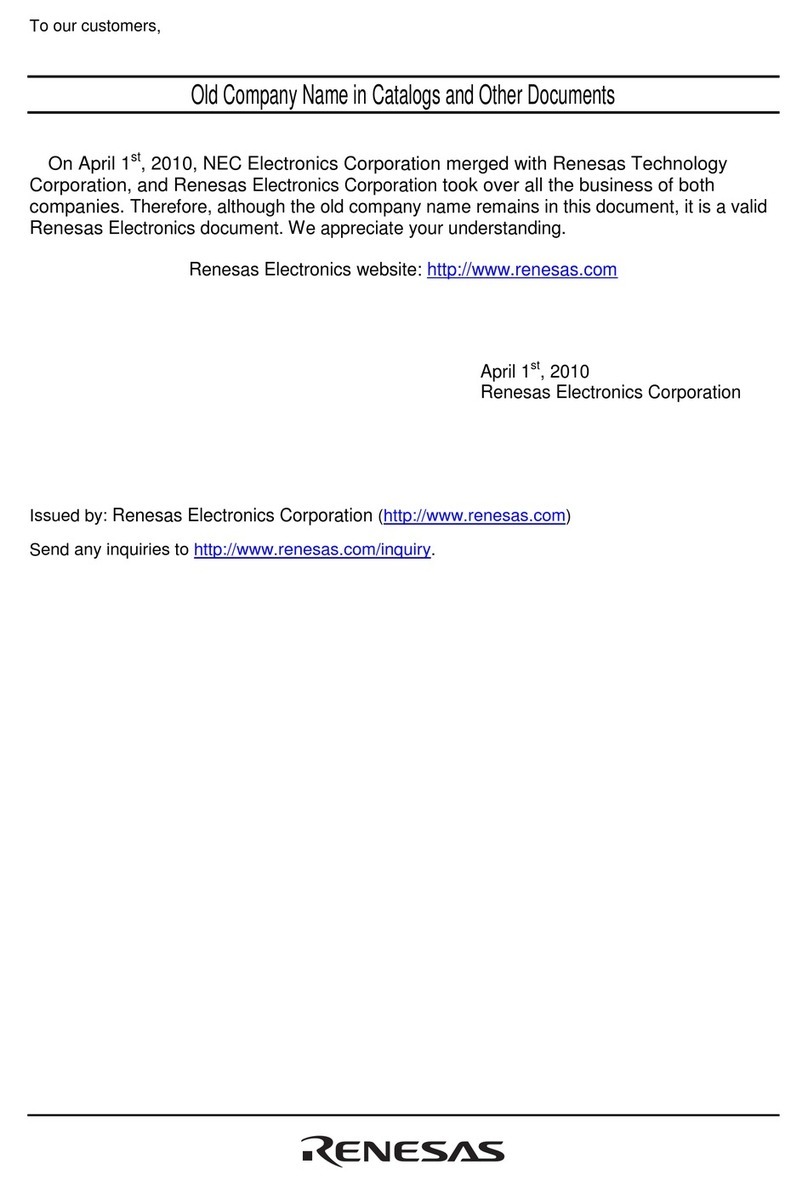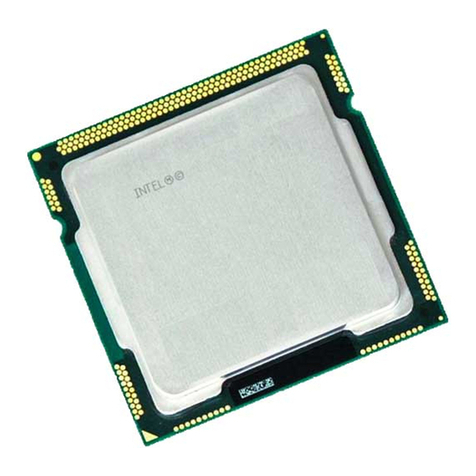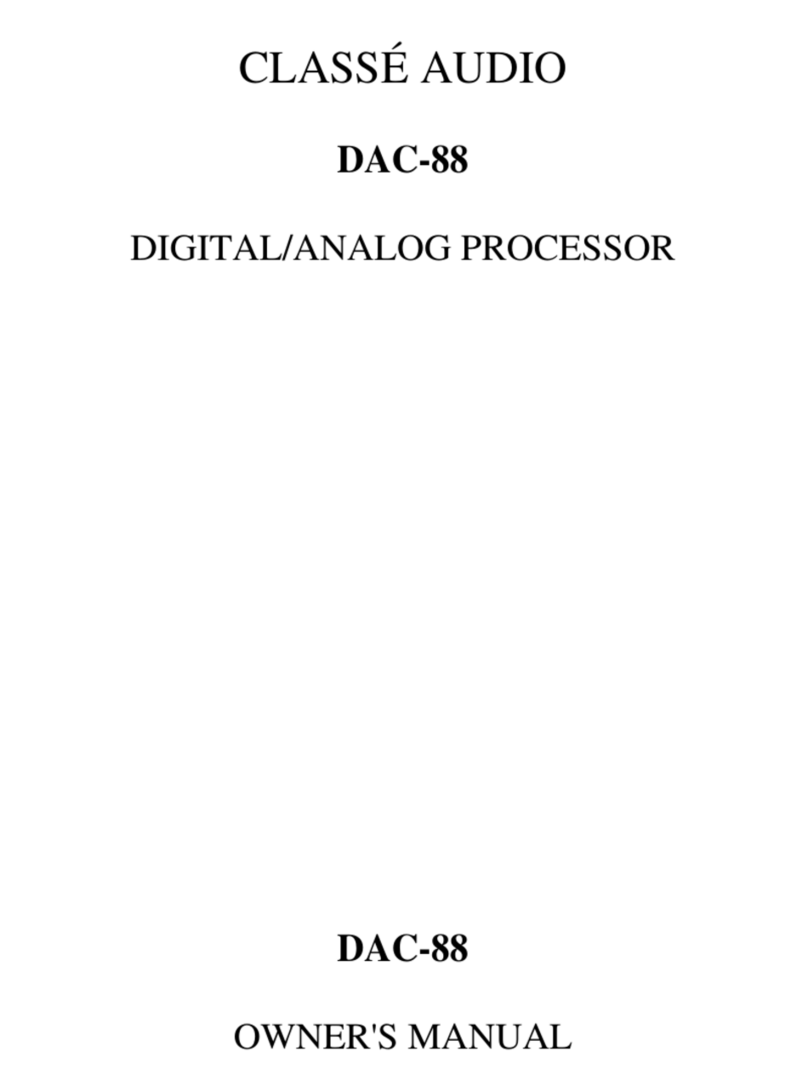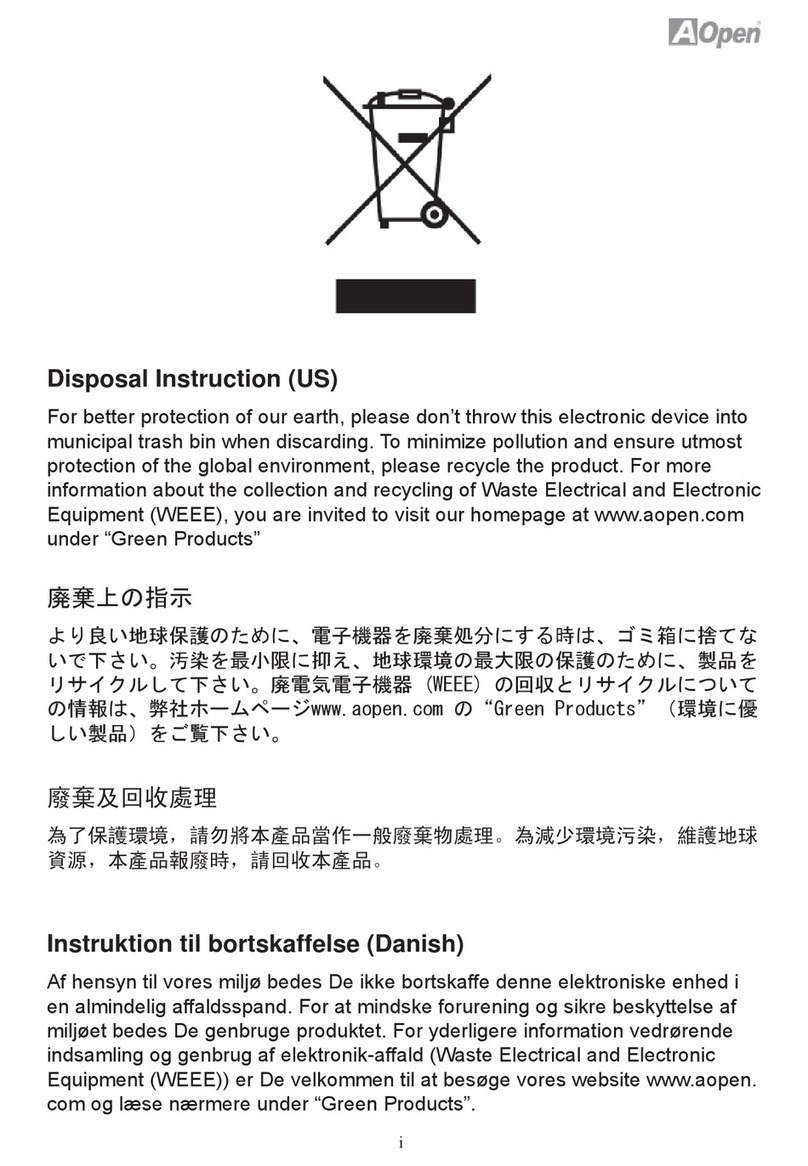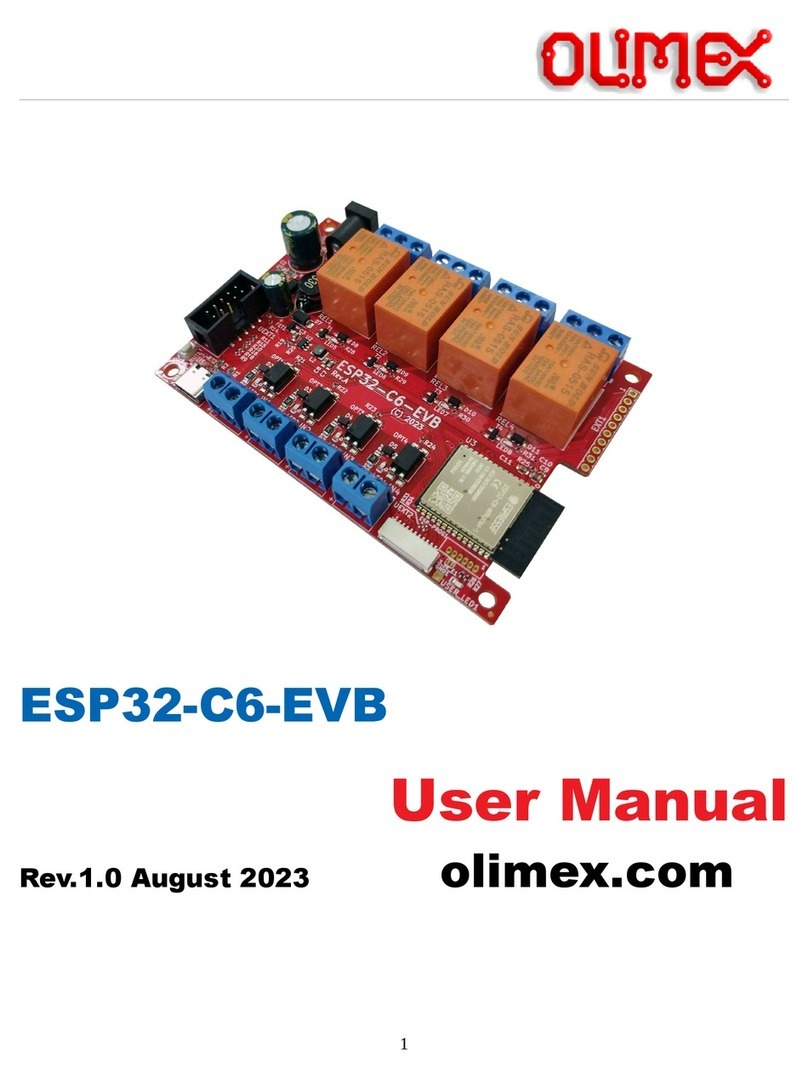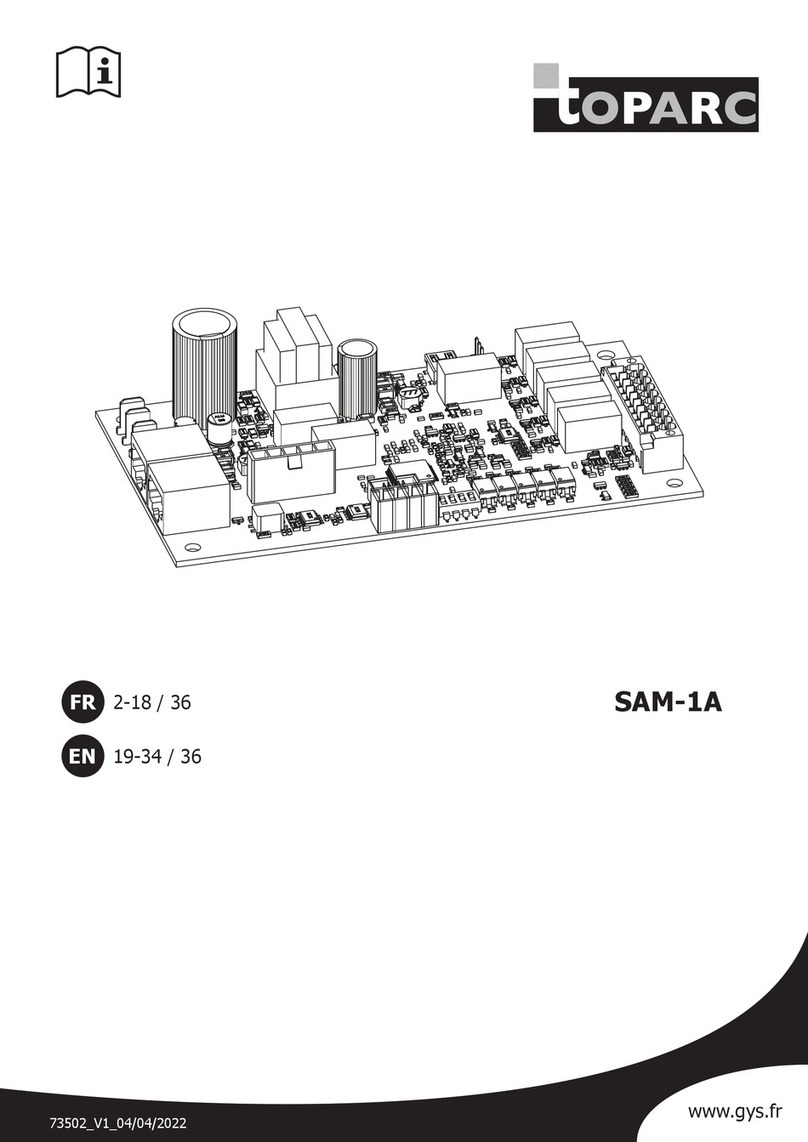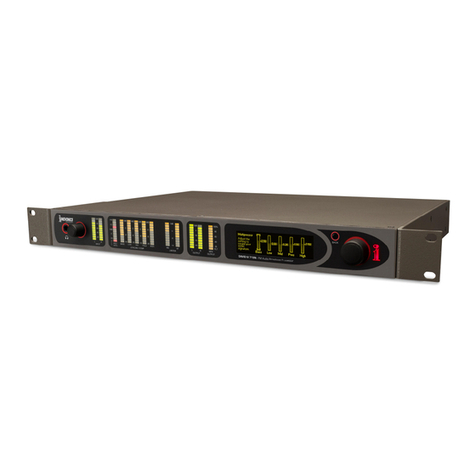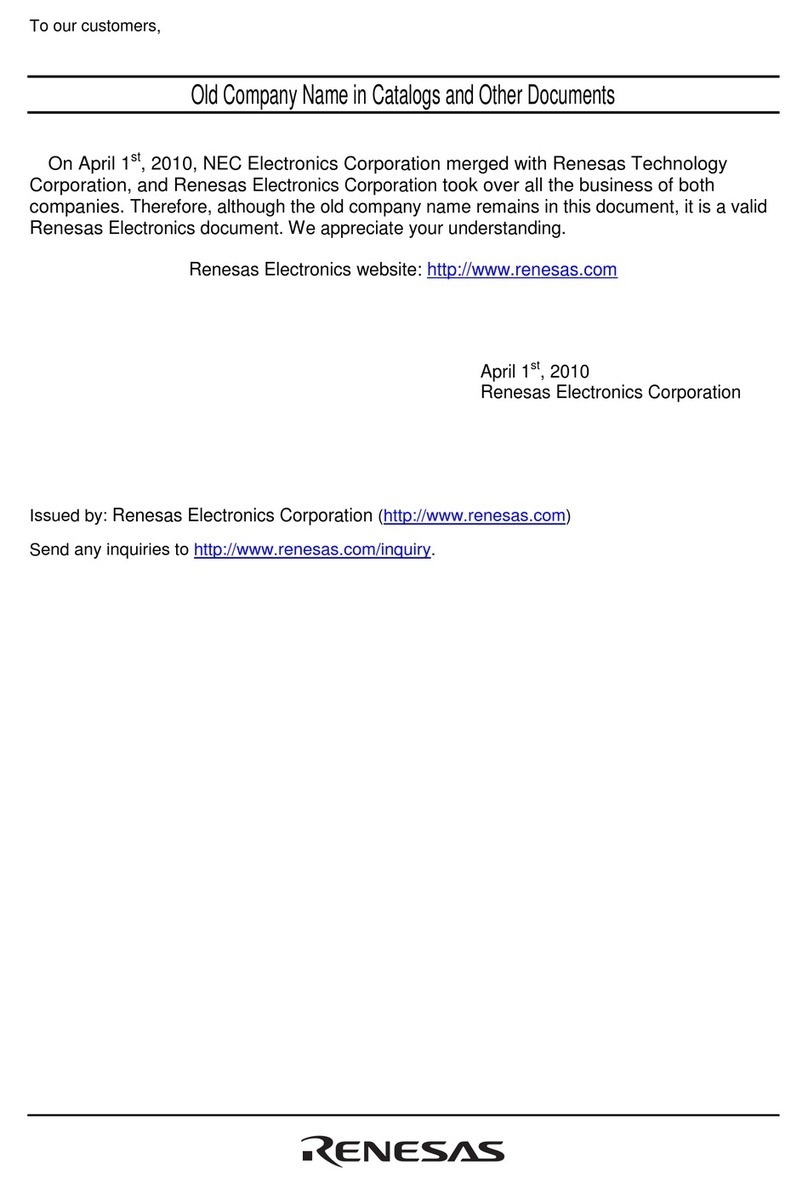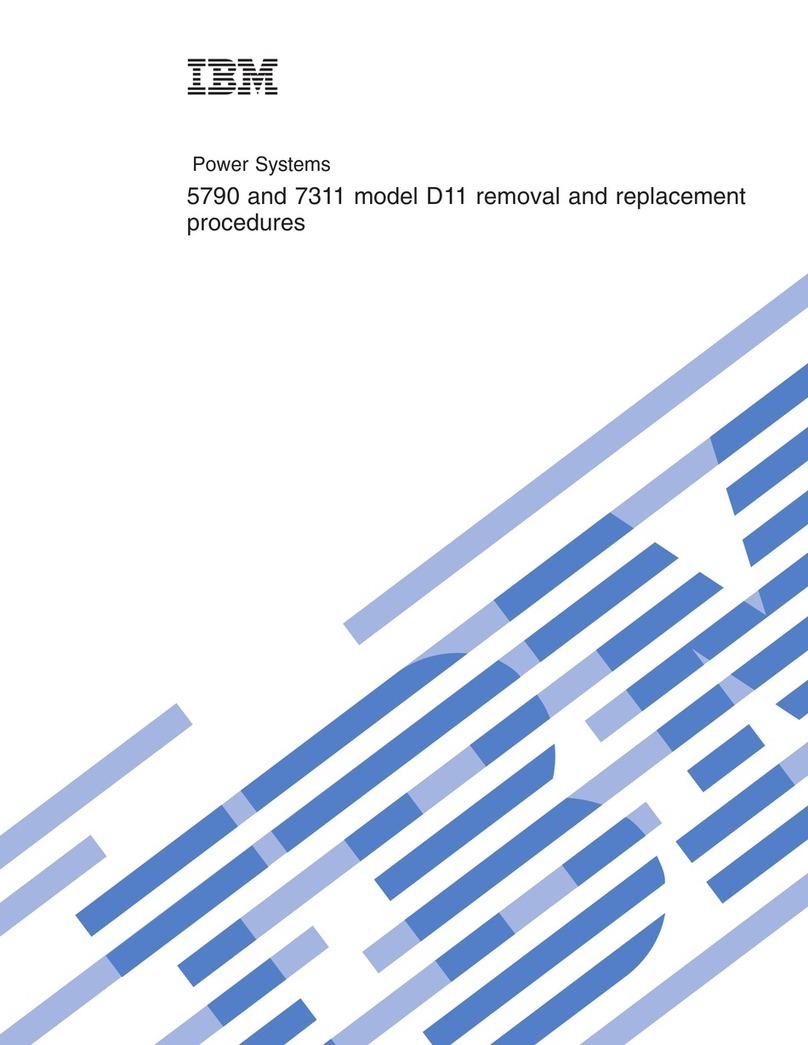Pro-Log STD 7000 User manual

STD
7000
7801
808SA
Processor
Card
USER'S
MANUAL

•
e
•
AU
MPm?*,
44444444M,
MP
$
4¥4A4¥Gq;
A
7801
808SA Processor Card
USER'S
MANUAL
9/81
•
==
• l.
=e;.UOMC.4$iapapntiu"",*n=w#li
<Ii:;;;.,;,;;;.
n
111.,;
gin"",".;
...

o
o
o
------------'---

•
•
>¥
7801
USER'S
MANUAL
TABLE
OF
CONTENTS
SECTION
1
2
3
4
5
6
7
APPENDIX
A
B
C
TITLE
INTRODUCTION
THE
STD
BUS
STD
BUS
Summary
7801
Pin
Ut
i 1i
za
t ion
Control
Bus
Signal Table
Processor
Status
Codes
7801
SPECIFICATIONS
Power
Requirements
Drive
Capability
and Loading
Clock
Generator
Timing and
Waveforms
Mechanical
Environmental
80SSA
ARCHITECTURE
AND
INSTRUCTION
SET
SOSSA
Programming
Model
SOSO/SOSSA/Z80
Compatibility
808SA
vs
S08S
Characteristics
STO
Instruction
Mnemonics
Instruction
Cross-Reference
Table
SOSSA
Instruction
Set
Interrupts
PROGRAM
INSTRUCTION
TIMING
Introduction
WAIT
States
DMA
Mode
Instruction
Timing Table
Programmed
Timing Example
MEMORY
AND
I/O
MAPPING
AND
CONTROL
Memory
Addressing
12K-Byte Onboard
Memory
Input/Output
Port
Addressing
Onboard
Serial
I/O Lines
PROGRAM
AND
HARDWARE
DEBUGGING
Microprocessor Logic
State
Analysis
Instruction
Dia9no~tic
Tables
M82S
System Analyzer
7801
STRAPPING
OPTIONS
SCHEMATIC
AND
ASSEMBLY
DIAGRAMS
MS2S
SYSTEM
ANALYZER
DATA
SHEET
PRO-LOG
CORPORATION A
\c<cG\
03
FORM
NO.
101905
*4
44
i ¥ # PW4
fPA
r"
,
Itt
., WMiiF
,$liCea:
,,::"U,;===,
_'"x,,;
it
"A#II
'Ii
X==';;4M&4NMUiI&iM_
PAGE
REV
A

I
,I
I
SECTION
ONE
PRODUCT
OVERVIEW
SOSSA
PROCESSOR
CARD
This card
combines
a
buffered
and fully expandable
808SA
microprocessor
withonboard
RAM and
PROM sockets.
The
7801
includes
1K
byte
of
RAM
with
sockets
for
up
to 4K. and sockets
for
up
to
8K bytes
of
ROM
or
EPROM. An STO BUS system using the
7801
card
can be expanded to full 808SA
memory
and I/O':
capability
The
7801
STO BUS interface may be
disabled
for
OMA •
FEATURES
• 80SSA
Processor
• 4096 bytes RAM
capacity
onboard
• 1024 bytes RAM
included
(211
4L
type)
• 8192 bytes ROM
capacity
onboard
(2716
type)
• 3 State Address, Data,
Control
Buses
•
• Power-on·reset
or
pushbutton
reset
input
• Five
interrupts
• Serial
1/0
lines
•
All
lC~s.-socket.ct
•
Single
+5V
operation
.7801:
6_25
MHz
crystal,
320ns time
states
.7801-1:
6_
144MHz
crystal,
325.5ns time
states
•
External
clock
input
option
..
M.RO-
INTRa"
IUMO-
WAITRO'
CNTRl.
(IXT CLKI
J1
INTIRRUPT
AND SIR.AL.
',0
ACCESS
",OCIISOR
IOI5A
DATA
IUS
ADORIIS
loSTATI
IUS
IU,.,'RS
loSTATt
IUS
IU"U
,.
7101
SHADING INOICATIS SOCKETS
ONU
'INDICATES ACTIVI
LOW
l.OGIC
FIGURE
ONE:
7801
BLOCK
DIAGRAM
DATA
IUS
(00007)
AOORISS
IUS
(AOoA1S'
~l..o<!.\IC."
MIMRO-
lORa-
WR'
MCSYNC-
INTAK'
IIUSAIC'
STATUS
O'
STATUS
l'
STSRn_TO
M'MlX'
10UIt·
I
I
I
I
10
I
o
I~----------------------------------------------------------~----~~------~--------~----~----~
II
PRO-LOG
CORPORATION A
REV
A
SHT
'),.,
OF
I'II---------------------------'-------~
_
_L_
_
__l
FOAM
NO. 101905

o
•
SECTION
TWO
-
THE
STO
BUS
The
STO
BUS
standardizes
the
physical
and
electrical
aspects
of
modular
a-bit
microprocessor
card
systems,
providing
a
dedicated,
orderly
interconnect
scheme.
The
STO
BUS
is
dedicated
to
internal
communication and power
distribution
between
cards,
with
all
external
communication
made
via
I/O
connectors
which
are
suitable
to
the
app1
ication.
The
standardized
pinout
and
56-pin
connector
lends
itself
to
a bussed motherboard
that
allows
any
card
to
work in any
slot.
As
the
system
processor
and primary system
control
card,
the
7801
is
responsible
for
maintaining
the
signal
functionality
defined
by
the
STO
BUS
standard.
A complete copy
of
the
STO
BUS
standard
is
contained
in
the
SERIES
7000
STO
BUS
TECHNICAL
MANUAL,
available
from Pro
Log
Corporation,
2411
Garden Road, Monterey,
California
93940.
STO
BUS
Summary
The
56-pin
STO
BUS
is
organized
into
five
functional
groups
of
backplane
signals:
1. Logic Power
Bus
pins
1-6
2. Oata
Bus
pins
7-14
3. Address
Bus
pins
15-30
4.
Control
Bus
pins
31-52
5.
Aux
i 1ary Power
pins
53-56
Figure
, shows
the
organization
and
pinout
of
the
STO
BUS
with
mnemonic
function
and
signal
flow
relative
to
the
7801
Processor
card:
COMPONENT
SIDE
CIRCUIT
SIDE
PIN
MNEMONIC
SIGNAL
DESCRIPTION PIN
MNEMONIC
SIGNAL
DESCRIPTION
FLOW FLOW
LOGIC
1
·SV
In
+S
Volts
DC
(Bussed) 2
·SV
In
·S
Volts
DC
Bussed)
POWER 3
G~O
In Digital
Ground
(Bussed) 4 GNO In Digital
Grol.;~C
Bussed)
BUS 5 -5V
-S
Volts DC 6 -5V -5 Volts DC
7
03
InlOut
Low
Order Data Bus 8
07
InlOut
High
Order
::Ja:a
Bus
DATA
9
02
InlOut
Low
Order
Data Bus
10
06
InlOut
High
Order
Ca:a Bus
BUS
11
01
InlOut
Low
Order
Data Bus
12
OS
InlOut
High
Order
Cata Bus
13
DO
InlOut
Low
Order
Data Bus
14
04
InlOut
High
Order
Ca~a
Bus
15
A7
Out
Low
Order
Address Bus
16
A15
Out
High
Order
A-:dress
Bus
17
A6
Out
Low
Order
Address Bus
18
Al
..
Out
High
Order
Ao:lo:lress
Bus
19
AS
Out
Low
Order
Address Bus
20
A13
Out
High
Order
AIjClress
Bus
ADDRESS
21
A4
Out
Low
Order
Address Bus
22
A12 Out
High
Order AOdress Bus
BUS
23
A3
Out
Low Order Address Bus
24
All
Out
High
Order Address Bus
25
A2
Out
Low
Order
Address Bus
26
A10 Out High
Order
Address Bus
27
Al
Out
Low
Order Address Bus
28
A9
Out
High
Order
Address Bus
29
AO
Out
Low Order Address Bus
30
A8 Out
High
Order
Adljress
Bus
31
WR·
Out
Write to
Memory
or
I/O
32
RD·
Out
Read to
Memory
or
I.
0
33
lORa·
Out
I/O
Address Select
34
MEMRO-
Out
Memory Address Select
35
10EXp·
Out
110
ExpanSion
36
MEMEX·
'Out
Memory ExpanSIon
37
REFRESH· Refresh
Timing
38
MCSYNC·
Out
CPU MaChIne
Cycle
Sync
CONTROL
39
STATUS
1·
Out
CPU Status
'.
40
STATUS
O·
Out CPU Status
BUS
41
BUSAK"
Out
Bus
Acknowledge
42
BUSRO·
In Bus ReQuest
43
INTAKo
Out
Interrupt
Acknowledge
44
INTRO"
In Interrupt ReOuest
45
WAITRO" In Walt ReQuest
46
NMIRO'
In
Non-MaskaOI~
Interrupt
47
SYSRESET"
Out
System Reset
48
PBRESET' In Push Button
~eset
49
CLOCK"
Out
Clock
from Processor 50
CNTRl·
In AUX TimIng
51
peo
Out
Priority Chain
Out
52
PCI In PriorIty Cha,'"
In
POWER
53
AUXGNO
AUX
Ground
(BUSSed)
54
AUXGND
AUX
Grouna
8'.Jssea)
BUS
55
AUX+V
AUX POSitive
(-12
Volts DC) 56
AUX-V
AUX NegatIve
-'2
Volts
DC,
·Low
L.evet
Active
Indicator
_-2.---:
-rl\l.
Srp
~U
S
FORM
NO. 101905
\O~~
: t
AM#.
WM¥4#¥W
AMMM4¥AN4¢4fTM
P¥
gp4M¥4QM44¢
AA
4M4hP4\#¥4#MMii#
Wf#4¥MA
4T\
A
A¥4A
AWPW¥M4P4%?44I
WM,
A%#i,4
P#
4%4
P P
#4
4 r

STO
BUS
Pin
Utilization
by
7801
Since
the
STO
BUS
standard
does
not
specify
timing
or
require
that
all
available
pins
be
used,
the
timing
and
signal
allocation
assumes
many
of
the
characteristics
of
the
microprocessor
type
used.
The
characteristics
of
the
7801
are
dictated
by
its
8085A
microprocessor,
with
LSTTL
buffering
added
to
enhance
the
card's
drive
capability.,
The
b~ffers
decrease
memory
and I/O
access
time
slightly.
The
allocation
of
STO
BUS
lines
for
the
7801
is
given
below.
1. Logic Power Bus:
+5V
(pins
1,2)
and Logic Ground
(Pins
3,4)
supply
operating
power
to
the
7801.
Pins
5 and 6
are
open.
2. Data Bus:
Pins
7 through
14
form an
8-bit
bidirectional
3-state
data
bus
as
shown
in
Figure
2 High
level
active
data
flows between
the
7801
and
its
peripheral
cards
over
this
bus.
When
the
7801
fetches
data
from
its
onboard
memory
sockets,
this
data
also
appears
on
the
STD
Data Bus.
With
the
exception
of
Direct
Memory
Access
(DMA)
operations,
the
7801
controls
the
direction
of
data
flow
with
its
I1EHRQ,r"
10RQi"
RD""
WR'':,
and
INTAK~r,
control
signal
outputs~
Peripheral
cards
are
required
to
release
the
data
bus
to
the
high
impedance
state
except
when
addressed
and
directed
to
drive
the'data
bus
by
the
7801. Note
that
the
low-order
address
bits
(AO-A7)
are
multiplexed
on
the
Data Bus.;
AO-A7
appear
on
00-07
while
MCSYNC*
is
active.
The
7801
releases
the
Data
Bus
when
BUSAK*
is
active
in
response
to
BUSRQ*,
as
in
DMA
operations.
3.
Address Bus:
Pins
15
through
30
form a
l6-bit
3-state
address
bus
as
shown in
Figure
2 . The
7801
drives
high
level
active
l6-bit
memory
addresses
over
these
lines,
and
8-bit
I/O
port
addresses
over
the
eight
low-order
address
1
ines
(AO
through
A7
on
pins
15, 17, 19, 21, 23, 25,
27
and
29).
The
7801
releases
the
Address
Bus
when
BUSAK*
is
active
in
response
to
BUSRQ~~,
as
in
DMA
operations.
4.
Control
Bus:
Pins
31
through
52
provide
control
signals
for
memory, I/O,
interrupt,
and fundamental
system
operations.
Figure
3 summarizes
these
signals
and shows
how
they
are
derived
from
8085A
signals.
The
7801
releases
the
Control
Bus
during
BUSAK*
in
response
to
BUSRQ*,
except
for
the
following
output
signals:
MEHEX,;',,
10EXPi"
BUSAK;'"
CLOCK'~',
PCO.
5.
Auxilary
Power Bus:
Pins
53
through
56
are
not
used
by
the
7801
and
are
electrically
openc
The
7801'
meets
all
of
the
signal
requirements
of
the
STD
BUS
standard.
Detailed
timing
information
and
specifications
are
in
Section
3.
I
PRO-LOG
CORPORATION
FORM
NO. 101905
A
REV
A
SH
T
"-f
OF
o
o
o

e
:MNEMOt-J
IC
PIN
IN/OUT
FUNCTION
IHOW
DERIVED,
808SA
NAME
iWR
!
31
Out#
Write
to
memory
or
I/O I
[WR1;]
:RD*
I
32
Out#
Read
from
memory
or
I/O
[RD*]
IORQ1
33
OUT#
AO-A7
hold
valid
I/O
address
[IO/M*]*
MEMRQ";
I
34
OUT#
AO-A15
hold
valid
memory
[IO/M*]
i
address
,
I
10EXP*
35
OUT
I/O
expans~on
control
User-removabl~
ground
MEMEX*
36
OUT
Memory
expansion
control
User-removable ground
REFRESH~':
37
-: (Not used) I E1ect
rica
11y open
MCSYNCr;
38
OUT#
One
transition
per
machine
[ALE]
*
cycle;
undecoded
status
STATUS
1*
39
OUT#
Undecoded
status;
Note 1
[S
1]
*
STATUS
0".
40
OUT#
ndecoded
status,
Note 1
[SO]
*
..
I
BUSAK*
:
41
OUT
Acknowledges
BUSRQ*
i
[HLDA]
*
I
;BUSRQ*
42
IN
Bus
request
(DMA);
synchronous I
[HOLD]*
.
processor
halt
and
3-state
l
! !
;
driver
disable
I
.....
-
--
...
----
.
..---
iI
NTAKr~
:
43
OUT#
!
Acknow
1edges I
NTRQ*
and rep1
ace~[
I
NTA;'~]
e i
(MEMRQ*
.
RD*)
to
read
i ! :
interrupt
vector
IINTRQ*
I
44
:
IN
Maskable
interrupt
request
[I
NTR]'':
WAITRQ*
45
IN
Synchronous
processor
ha
1t
[ROll
~
NMIRQ*
46
IN
Nonmaskab1e
interrupt
request
j
[TRAP]
1;
SYSRESET~':
!
47
OUT#
System power-on and pushbutton ;[RST]*
reset
one-shot
output
I
PBRESET~I;
48
IN
Pushbutton
reset
input
:[R~':
]
CLOCK;':
49
OUT
Time
State
tlock
(1
/2
cry
s
ta
1 I
[CLOCK]
* -
user
optional
,-
frequency) i jumper
connection
CNTRL~';
50
IN
External
clock
input
(2
times
:~1
-
user
optional
jumper
Time
State
Clock frequency) 1
connection
i
--i
-
~
IPC
I
/PCO
52/51
IN/OUT
Priority
chain
INote
~
*
Low
1eve1
active
# Output
buffer
disabled
when
BUSAK*
active
[]
Denotes
equivalent
Bo8SA
signal
name
NOTES:
t.
See
Figure
4
for
status
information.
2. Trace
on
7801
connects
PCI
to
PCO
to
maintain
chain
continuity.
FIGURE
3 :
7801
CONTROL
BUS
SIGNALS
PRO-LOG
CORPORATION
A
REV
SHT
S
\OCDq,O~
A
OF
~nA'"
Nn
tOtQOS
-,enM4==4I
"i.
t"";
" j,,.ij
IW
W
:UM
4$
M , Mg., 4
p;;
......
1,'4

7801
Processor
Status:
MCSYNC*,
STATUS
0*,
STATUS
1*
Signals
MCSYNC*,
STATUS
0*,
and
STATVS
1*
signals
provide
encoded
status
information
which
is
peculiar
to
the
808SA
microprocessor.
These
signals
are
useful
for
displaying
processor
status
in
logic
sign~l
analyzers,
and can be used
to
drive
certain
peripheral
chips
and
systems
designed
to
work
with
the
808SA
specifically.
The use
of
these
signals
is
not
recommended in
systems
where
microprocessor
device-type
independence
is
a
design
goal.
MCSYNC*
serves
a dual
function.
Its
leading
edge
denotes
the
approximate
start
of
a machine
cycle
(Section
3
).
Counting
the
MCSYNC*
transitions
allows
a
logic
signal
analyzer
to
select
a
specific
machine
cycle
within
a
mUlti-cycle
instruction
for
analysis.
The
lagging
edge
of
MCSYNC*
occurs
when
a
stable
memory
line
address
or
I/O
port
address
is
present
on
the
sro
Data Bus.
The
808SA
device
mu1.tiplexes
jots
low
order
address
lines
(AO-A7)
during
time
state
TI;
-tne
address
information
is
followed
by
data
in
subseq~ent
time
states
within
the
machine
~ycle.
The
lagging
(rising)
edge
of
MCSYNC*
is
used
on
the
7801
to
latch
thp
low
order
address.
MCSYNC*
is
equivalent
to
the
80SSA's
ALE
(Address Latch Enable)
output
signal.
STATUS
0*
and
STATUS
1",
can be decoded
externa
11
y
to
i
dent
i fy
the
type
of
machine
cycle
in
progress
as
shown in
Figure
4:
SEE
NOTE
I
MACHINE
CYCLE
TYPE
:STATUS
0*
STATUS
I'~
,MEMRQ'"
IORQi;!
RDi,
;
It/R,'t
\ I
NTAKi:
2
3
NOTES:
I.
2.
3.
4.
I
Read
instruction
opcode 0 o
I
Read
memory
except
opcode 1
Wr
i
te
in
memory
Acknowledge
INTRQ*
Acknowl
edge
NM
I
RQ":
and
interrupts
S.5,6.5,7.5
Bus
idle
during
ADP
(Add
to
H,L
pair)
instruction
HALT
instruction
o
o
o
o
a
o
o
FIGURE
4:
MACHINE
CYCLE
STATUS
SIGNALS
I 0 I 1 j 0 I 1 I 1
o
o
o
o
o
I
i
1
1
!
i
I
o I
1,
I
*low
active:
Active
= a
Inactive
= 1
o
The
states
shown
for
MEMRQ":
and
fORQi,
during
interrupt
acknowledge
cycles
are
those
produced
by
the
808SA
dev
ice.
For
the
ear
lie
r 8085,
the
MEMRQi:
and
10RQ":
states
are
reversed.
The Data
Bus
is
idle
during
the
second and
third
machine
cycles
machine
cycles
for
the
ADP
ins
t
ruc
t ion (I rrte1
mnemon
i
cis
DAD).
No
MCSYNC*
CAlE~")
signa
1
is
generated
during
these
cycles.
((808SA
only).
Processor
pins
10/M*,
RD*,
WR*
are
in
the
high
impedance
state.
Timing
for
STATUS
0*
and
STATUS
1*
is
similar
to
Address
Bus
timing
(Section
3).
For
additional
information,
refer
to
the
808SA
manufacturer's
literature.
PRO-LOG
CORPORATION A
REV
SH
T
I.p
\o~qo~
A
OF
FORM
NO. 101905
o
o
o

o
•
•
SECTION
3 -
7801
SPECIFICATIONS
Power Requirements
!
RECOMMENDED
OPERATING
LIMITS
i
ABSOLUTE
NONOPERATING
LIMITS
I
MIN
MAX
UNITS
I
PARAMETER
I
MIN
TVP
MAX
0
5.50
I
Volts
!
Vcc
(Note
1)
4.75
5.00 5.25
I
!
Ampere
!
lice
(Note
2)
:
11.00
1.40
I
FIGURE
5:
7801
POWER
SUPPLY
SPECIFICATION
NOTES:
1.
In
order
to
guarantee
correct
operation,
the
following
power
supply
considerations
apply:
a.
Vcc
rise
must be monotonic,
rising
from
+0.50
Volt
to
+4.75
Volts
in
10
ms
or
less.
b.
If
Vcc
drops
below
+4.75
Volts
at
any
time
it
must be
returned
to
less
than
+0.50
Volt
before
restoration
to
the
specified
operating
range.
2. Icc
specification
assumes
that
all
EPROM
and
RAM
sockets
on
the
7801
are
loaded.
Subtract
75
rnA
per
2716
EPROM
and
SOmA
per
2114L
RAM
for
each
device
not
used.
(typical
values)
I
,
I
f
i
i
Both
the
8085A
and 2114L
devices
require
10
milliseconds
minimum
after
initial
power-on
for
stabilization
of
internal
bias
oscillators.
The
780l's
power-on
reset
one-shot
provides
adequate
stabilization
delay,
only
if
Vcc
risetime
is
less
than
10
milliseconds.
Drive
Capability
and Loading
The 780)IS
STD
BUS
Edge
Connector
Pin
List
(Figure
6 ) and
Serial
I/O and
Interrupt
Socket
Jl
(Figure
7 )
give
input
loading
and
output
drive
capability
in
LSTTL
loads
as
defined
by
the
SERIES
7000
TECHNICAL
MANUAL.
In
general,
input
lines
and
disabled
3-state
outputs
present
5
LSTIL
loads
maximum
(one
LSTTL
or
MOS
input
plus
4.7K
pullup
resistor).
Output 1
ines
can
drive
a
minimum
of
50
LSTIL
loads.
Pins
which
are
unspecified
in
Figures
6 and 7
are
electrically
open.
Exceptions
to·
the
general
loading
rules
are:
PRO-LOG
FORM
NO. 101905
a.
WAITRQ*
input,
which
is
15
LSTTL
loads.
b.
PBRESET*
input,
which
is
1
uF
typical
in
parallel
with
2
LSTTL
loads
•
c.
CLOCK*
output,
which can
drive
10
LSTTL
loads.
d.
PCI
and
PCO,
which
are
connected
to
each
other
but
to
nothing
else
on
the
7801.
REV
A
CORPORATION A
SHT
i
OF

FIGURE
6
7801
STD
BUS
EDGE
CONNECTOR
PINOUT
AND
LOADING
o
STD/7801 EDGE CONNECTOR PIN LIST
PIN
NUMBER PIN NUMBER
OUTPUT
(LSTTL
DRIVE)
OUTPUT :(LSTTL DRIVE)
INPUT (LSTTL LOADS) INPUT (LSTTL LOADS)
MNEMONJC MNEMONIC
+5
VOLTS
IN
2 1 IN
+5
VOLTS
GROUND
IN 4 3 IN
GROUND
-5V
6 5
-5V
D7
s 'iO 8 7
50
5
D3
D6
5
50
10
9
50
5
02
D5
5
so
12
11
50
5
01
D4
5
c;n
14
13
50
5
DO
A15
5 'iO
16
15
50
5
A7
A14
5
'in
18 17
50
5
A6
A13
5
50
20
19
50
5
A5
o
A12
5
50
22
21
50
5
A4
A11
5
50
24
23
50
5
A3
A10
5
50
26
25
50
5
A2
A9
5
50
28
27
50
5
A1
A8
5
50
30
29
50
5
AO
RD*
5
50
32
31
5J
5
WR*
MEMRO*
5
50
34
33
5) 5
IORO*
MEMEX*
(GROUND)
OUT
36
35
OUT
IOEXP*
(GROUND)
MCSYNC*
(ALE~~)
5
50
38
37
REFRESH*
STATUS
O·
(SOi:) 5
50
40
39
50
5
STATUS
1·
(S
1
;':)
-.
BUSRO*
(HOLD;':)
5
42
41
50
5
BUSAK*
(HLDAi':)
INTRO*
(I
NTRi:) 5
44
43
50
5
INTAK*
(INTAi:)
NMIRO·
(TRAPi:) 5
46
45
15
WAITAO*
(READY)
PBRESET*
(R;':) 1
iJF
48
47
50
5
SYSRESET*
(RST;':)
CNTAl*-
EXT
eLK IN
50
49
10
ClOCK*
PCI IN
52
51
OUT
PCO
AUX
GND
54
53
AUX
GND
AUX-V
56
55
AUX
+V
o
*Designates Active
Low
Level
Logic
()
Designates
equivalent
8085A
pin
names

•
e
•
Jl
SERIAL
I/O
AND
INTERRUPT
PIN
OUT
AND
LOADING
PIN
NUMBER PIN NUMBER
OUTPUT
(
LSTTL)
OUTPUT
.(
LSTTL)
I
NPUI_
(LSTTL)
INPUT
(LSTTL)
INTERFUPT
7.5
~
* 5 1
16
OUT
GROUND
I
NTERF'.UPT
6.5
* 5 2
15
OUT
GROUND
INTERRUPT
5.5
* 5 3
14
OUT
GROUND
SOD":
50
4·
13
OUT
GROUND
SID":
5 5
12
OUT
GROUND
(SPARE)
6 11
OUT
GROUND
(SPARE)
7
10
OUT
GROUND
(SPARE)
8 9
OUT
GROUND
*Low
Level
Active
FIGURE
7 :
SERIAL
I/O
&
INTERRUPT
CONNECTOR
PINOUT
AND
LOADING
NOTE:
Pads
are
provided
at
spare
pins
for
user-connected
signals
PRO-LOG
CORPORATION A
FORM
NO. 101905
.=
____
"
..
*
__
":.45:::",,;
l6.,ml:I,#'
#.$
4T4¥
$
REV
A
SH
r:..,
OF
AlMA
(
",iLk
It
.-

Clock
Generator
The
7801
's
8085A
microprocessor
has an
internal
clock
oscillator
that
serves
as
the
primary
timing
element
in a
7801-based
system.
The
oscillator's
output
is
divided
by
two
to
produce
the
time
state
clock.
The time
state
clock's
period
is
the
shortest
program-related
period
of
interest
in
the
system.
Instruction
execution
times
are
computed
as
whole
multiples
of
the
time
state
clock
period
(see
Section
5
).
The
7801
is
shipped
with
a
crystal
installed
which
sets
the
system's
time
state
period.
The
only
difference
between
the
7801
and 7801-1
is
the
resonant
frequency
of
th is
crys
ta
1•
If
desired,
the
user
can
substitute
a
different
crystal
or
replace
the
crystal
with
a TTL-compatible
clock
signal
generated
externally.
Details
of
this
option
are
given
in
Append~x
A.
The
frequency/period
characteristics
of
the
crystal
or
external
clock
signal
are
shown
in
Figure
8
!
CRYSTAL
OR
I
RESULTING
i
EXTERNAL
CLOCK
TIME
STATE
FREQUENCY
PERIOD
COMMENT
I
!
6.250
MHz
j 320.00
ns
7801
operating
rate;
I
I
fastest
allowable
rate
for
8085A
with
onboard
crystal
i
6.144
MHz
325.52 ns 7801-1
operating
rate;
I
compatible
with
SBC-type !
I i
systems
and
divisible
to
I
standard
Baud
rates
I
6.000
MHz
333.33
ns
I
Fastest
recommended
externall
,
user-provided
clock
signal
I
I I
,
wi
th
crys
ta
1 removed
I
I I I
1.000
MHz
2000.00 ns I SlowesX
allowable
crystal
or:
i
external
clock
signal
for
I
j j
8085A
!
! I ,
FIGURE
8
7801
Clock
Oscillator
Freguency
Summary
"
PRO-LOG
CORPORATION A
REV
\0<0'\03
A
::lRM NO. 101905
o
o
o
SHT
ID
OF

e
0
•
Timing
Specifications
(Based
on
320ns ± 0.05% time
states)
An
understanding
of
the
7801's
signal
timing
characteristics
is
necessary
for
the
selection
of
speed-compatible
memory
devices,
I/O
functions,
and
other
peripheral
STO
BUS
cards,
and
for
real-time
logic
analysis
of
7801-based
STD
BUS
card
systems.
The
7801
's
timing
characteristics
are
established
by
its
808SA
microprocessor,
with
add
it
iona 1 de1
ays
added
by
LSTTL
bu
ffe.rs.
The
bas ic
opera
t
ions
performed
by
the
7801
and
the
signals
controlling
these
operations
are
shown
in
Figure
9.
SIGNALS
OPERATION
WAVEFORM
MEMRQ*,
RD*&
Read
from
memory
Figure
AO-Al5
MEMRQ1:
, WR*,&
Write
to
memory
Figure
AO-A15
10RQ*,
RD*
.&
Read
from an
input
port
Figure
AO-A7
10RQ*,
WR*
.&
Write
to
an
output
port
Figure
AO-A7
I
NTAK*
Read
an
interrupt
instruction
Figure
(in
response
to
INTRQ*
only)
FIGURE
9 :
BASIC
7801
OPERATIONS
.&
Note
that·
the
fa
110wi
ng
signa
1
s.
a
11
have i
dent
icaI t
imi
ng
character
i
st
i
cs:
ADDRESS
BUS
A8-A
15
MEMRQ~':,
I
ORQ*,
STATUS
O~':,
STATUS
1
*.
The
waveforms
on
the
following
pages show
timing
measurements
as
a
5-1etter
code
as
follows:
__
-------------First
letter
is
always T
for
Timing measurement.
-------------
Second
letter
is
the
abbreviation
of
the
signal
which
starts
the
measurement. (0 = Data Bus)
10
11
10
11
10
---------
Third
letter
is
the
condition
of
the
start
signal.
(V=Val
id)
Ir
Fourth
letter
is
the
abbreviati"on
of
the
signal
which
,
,U
ends
the
measurement.
(R=RD~':)
TOVRH+4-----Fifth
letter
is
the
condition
of
the
end
signal.
(H=High)
For example,
rDVRH
stands
for·
lime
from
.Q.ata
y'alid
until
~D~':(READ)
High
inactive.
Specific
abbreviations
are
given
in
the
Legend
on
each
page
of
the
specificat1on
.
* Denotes
low
level
active
signal
PRO-LOG
CORPORATION
FORM
NO. 101905
'_."'iM,.'4I,
t I I
",4R
i
4i#A4
4A4
lap
,m
A
REV
~
SH
T
II
OF
tt¥A4lAM
.•
' iA;a; I
II
'- ; $\4
M.
Q.«
Ii;
..
$.,.
iMwur

\
I
'II
I
'II
"
I:
I(
II
I
I_
,V\AC~
(,'JE..
c,ycLE..-·
~!
I J
I
T1
I TZ-
T3
)
71
j
!
J \ / \ I \ i \
CLCG~*
, \ / \
\ ,
, -
_._
..
_-
...
_----
-
---
--"/
:'
r""~~("r-
,.
t
f"'r..,-.,;
\
-.....
__
.J
....
VAL.l
!)
,..\t!>
~',.
.::-
-+
,:..:';
-A:!,
/1\
__
I,
I
I
•
::-:~1
z,y
....
1
I---
T~HM-
~!
.'vl
=i\'\
~:;:
7
-~.:
.
-I-
'j
::.~
:.;:
I~
.:.'
\"
I (
!
---
I
___
~RL
II~
51
..
T~l.DV
;...
~:~
~r
* ,
!
::
.' •
....,;'~
~(~
.,!.'
I:
I
-.1
~/.·
..
:-.
T~L.l:>~
-sa-;4-
1...-
I
i \
~
...
(~
.....I
i I
.,I
,.--t
",
~L
I (
pAr.to.
I
~...
..
....
-"
~~
. J
.J
r.
..... . Ao-.47
0(..1;-
t--.
-'--'--'
..
-\
. to!
" -
SYMBOL'
PARAt1ETER
iMIN
MAX
UN
ITS
!
L:2GEND
t ;
Address
val
id
before
bus
data
!525
j
TAVDV
l !
A
Any
Address :must be va1i d
ns
i
j
~.
AO-~~t;
.
I I
I
E~RQ'-:
,I
~db':
i I
act
ive
before
,
TRlDV
I
RD*
bus
data
must: l
;0
Any
Data \ 250 i i
( i I be val id
ns
I
1ine
00-07
I i
, I
I I
TRlRH
RD*
pulse
width
385 ! I
:R
RD":
1i ne \ i ,
ns
:l low
state
TDVRH
Data
time
i
100
, ! i
setup
i
ns
I
! j I
H High
state
, I
I
TRHDV
Data
hold
time 0 I
:v
Va
lid
I
ns
I
I
; , 1
iZ
High
TRlDZ
, Data bus
dr
i
vers
OFF
(high
I I
I \ j f
I imEedance i impedance
read
mode)
after
0 i
ns
RD,':
active
I
TRHAX
Address hold time
after
RDi:
I t !
i
nact
ive
135
i
ns
!
FIGURE
10:
READ
TIMING
-
MEMORY
FETCH,
INPUT
PORT,
INTERRUPT
INSTRUCTION
NOTE:
In
onboard
memory
read
operations
(Section
6)
the
Data
Bus
does
not
enter
the
high
impedence
read
mode;
instead
the
7801
drives
data
fetched
from
the
onboard
memory
sockets
onto
the
Data
Bus
to
facilitate
logic
state
analysis.
The
access
time
for
onboard
memory
devices
may
not
exceed
the
values
shown
for
TAVDV
and
TRlDV
shown
above.
•
PRO-LOG
CORPORATION A
REV
SHT
12.J
lOic'10~
OF
~ORM
NO. 101905
o
o
o

o
e
•
• .
1'
11'",'
.u:
' .
,'
.....
L •
I'I!.-
,-, -
~.
.
T:L I
-?
,<
'--
;
...."
\
/ I \ ! \
--J
..
, I
\
\
'-
-I
~~/----------------------------;V
----1i
/":'::"/:1
A:;.':.'(·~
-7\'-
___
_
.......
~·~r
-._
-
'-'-
:
....
.........
-.
~
.
.........
,..
...
LEGEND
. A.
Any
address
. I
Line
AO-A
15
MEMRQ'~
'. I
ORQ*
o Any
data
1i ne
00-07
\.J
I
WRi:
1i ne
H i
High
state
V
Va
1
id
X
Don't
care
..........
--------
TAVw H --------aa..!
~
/
-r-
"*
:f
:"':========-TD-V-""-J-!-,
---------------~-I..._jw
i-;
D
x.~
I
1
~tr-,.-.':.O-.--A.-7-0-v~-!
---·t-])-.4-i-i4:--!;-~-
.-
..
---
..
---.----
..
------\jr------
- \
0'---------------------J""·-----
SYMBOL
I
PARAMETER
;
MIN
,
MAX
UNITS ;
j
! i I
ns i
TAVWH
I
Address
va1i d
before
wr
i
te
I
strobe
(WR*
r
is
i ng
edge)
I625
..
TOVWH
Data
setup
time
and
WR*
pulsewidth;
400 1 ns
l
TWHDX
Data
(and
address)
hold
time
i
85
! ns
FIGURE
11
:
WR~TE
TIMING
-
MEMORY
AN~
OUTPUT
PORT
PRO-LOG
CORPORATION A
FORM
NO. 101905
-_=_"A4
EAM
I
:=
, :
REV
A
#.4WM;_MA##MMU
"";';"'+'
SHT
\0
OF

..
A
1"'
:...
~'
•••
,.
,£1;.
'.
. -
~
_
::
J>
-\
LEGEND
I
A .
Any
address
! 1
ine
AO-A1S,
/'11
4
c.,:.J/;'j
E
~,#
'.'
- • t:
-,
-!..-
T1.
T2.
I
IW
I
\ / \
I
J
\~_/
SYMBOL
TAVQL
j
l....-rc.LoJ-/
----
PARAMETER
Auo('ess
val
id
before
WA
I
TRQ-;'t
mus
t
ee
ac
t i ve
to
insert
,
/
•
I
MIN
,
185
~~EMRQ*
,
10RQ":
WAIT
state
in
this
cycle
i
iQ
'
',,;'AITRQ*
jc
CLOCK":
iL
Low
state
!H
High
state
Iv
Val
id
TQLCL
WA
I
TRQ~I:
setup
time
pr
ior
to
i
clock
transition
fn
T2(for
;
110
!
first
WAIT
state)
or
in
TW.
i
TCLQH
\vAITRQ*
hold
time
after
clock
t
transition
in
T2(for
first
a
I
WAIT
state)
or
in
TH.
.
NOTE:
MEMRQ~'t
and
10RQ":
timing
is
identical
to
Address
Bus
timing.
FIGURE
12:
WAITRQ~':
TIMING
(One
WAIT
state
show!!.l
..
;
-1
~-;1'
J
~
.1
\
,~
•
v
_
...
_-.J\I..-----
MAX
,
\
I
I
I
I
I
/
I
UNITS
ns
ns
ns
I
t
I
!
i
I
!
I
o
01
WAIT
REQUEST
I
The
WAITRQ*
input
allows
the
7801
to
enter
the
WAIT
state
in any memory, I/O
or
interrupt
acknow~edge
cycle
while
a slow
memory
device
responds,
or
until
a
control
function
such
as
an
analog-to-digital
converter
finishes.
WAITRQ*
can
also
be used
to
single-step
the
7801.
PRO-LOG eORPORATION A
REV
A
FOAM NO. 101905
!
I
1°
SHT
H
OF

o
•
B !
I
!
L
H
z
I
V I
Address
Bus,
Data
Bus
\
Contro1
Bus!
Low
state
I
High
state
High imp-
edance
Va
1i d
I'
) I
I
J
.,..",
I~
\
\
,'"
A
'J-i
f;
\/
=.
I
T3
J \
T
\\-
__
._l
i
I
:1
I f
I
i
,
--..------------_
...
_-
;
~f
I
~--~~----------~:~
~
~
·1
(~5
_______
f
Ti<LCH~
---
..
1'1(L.B~.
i~
-a-
rJ(~S'/
..--,-
__
_
p/::WrN
\J-~~--------~---.----\(
/'
"------
--------------------------~
!
SYMBOL
PARAMETER
MIN
MAX
UNITS
TQLCH
TCHQH
TKLCH
TKLBZ
BUSRQ*
active
prior
to
T3
(BUSRQ*
setup
time)
BUSRQ*
active
after
start
of
T3
(BUSRQ*
hold
time)
I
BUSAK*
asserted
prior
to
TH
(Note
1)
;
200
I
I
o
125
;
i ns
;
! ns
L
ns
: Address Bus, Data Bus, and
most
Control
Bus
(Note 2)
outputs
float
after
BUSAK;'~
50
ns
is
asserted,
allowing
DMA
operations
TKHBV
I
!
7801
resumes
drive
6n
the
Address,
Data,
and Control I
50
I ns
I Busses
after
BUSAK*
goes
inactive
NOTES:
1.
TH
time
states
are
clock
periods
during
which
the
7801
has
relinquished
the
STO
BUS,
allowing
DMA
operations
to
proceed
with
an
alternate
controller
card.
Equivalent
to
808SA
Hold mode.
2.
The
following
Control
Bus
1
ines
are
floated
when
BUSAK~\-
is
active:
WR*,
R01:,
10RQ;':,
MEMRQ":,
I
!
I
MCSYNC
1
:,
STATUS
11
:,
STATUS
0":,
INTAK:;':,
SYSRESET,':,
DATA
BUS
00-D7?
ADDRESS
BUS
AO-AlS.
FIGURE
13
: 7801/STO
BUS
TIMING
FOR
DIRECT
MEMORY
ACCESS
(DMA)
OPERATIONS
PRO-LOG
CORPORATION A
REv
A
SH
T
I£)
OF
FOAM
NO.
101905
_"
••
#:=,;0.;'1#; q 4 -
4.4
:at
4F
i.
Aa;
#4
4#41$

Mechanical
The
7801
meets
all
STO
BUS
mechanical
specifications.
Refer
to
the
Series
7000
Technical
Manual
for
outline
dimensions.
If
the
Interrupt
and
Serial
I/O
access
socket
Jl
is
used,
one
additional
open
card
slot
on
the
component
side
of
the
7801
may
be needed
for
ribbon
cable
access,
depending
on
the
connector
and
cable
type
used.
Environmental
PARAMETER
Free
Air
Ambient
Operating
Temperature
Absolute
Nonoperating
Free
Air
Ambient
Temperature
Relative
Humidity,
Noncondensing
Absolute
Nonoperating
Relative
Humidity,
Noncondcnsing
MIN
TYP
o
25
-40
5
o
FIGURE
14:
ENVIRONMENTAL
SPEC1FtCATIONS
MAX
UNITS
55
°Celsius
75
°Celsius
95
%
100
%
PRO-LOG
CORPORATION
REV
A
A
FOAM
NO.
101905
SHT
J~
OF
o
o

4·\,,;
o
()
•
"
(
1
,
•
I
I
•
I
,
..
,
,
,
1
,
1
,
I
I
1
I
SECTION
4 - 808SA
ARCHITECTURE
.Atm
INSTRUCTION
SET
.
co
LOM
STA
STP
RWM
MEMOR¥
.:
)
I '
~=,
~
==~i=:l
I '7 -
IV
A~M
~CA~L~U~;tl~~~l:JjrE":j::r]i!t~I/I~O~D~A~T~A~:
__
~
__
~--:::--f
~I:"=:-----".
If
5,
:P'
17Tns:
5 4 3 2 I 0 4
t----4
~T.c:
II.!tU
RRAJ
"\
-:
I
""
-
~~=====:
I.
__
Mr-A.,.S_K,.....,.
......_
~C
RRA '
11---.
r ' 1 LOM 1
.£.t---_-e
~~--r_
.......
--J
ALM
It
I
~
LDMII
tJ~DR
•.
R,,~=:;;;:;;:;:;:;::l==l-.
ri
PS.Pl
I
\T'C~
I'OU'H"
OUTPUT
PORT
....
-----~,
Ir
__
~<?!:~~!~!
_______
~A~:~
_______
~
__
L_J
---
---~:jl
INST~UCTION
: I '
IPA:'
IN.T_E
J":':RIR~U_PT
_____
.·~>~I:..I_./~I,
---j
irr
i
II
-
T~I-
_:.:-:...;.-:.
__
::e
• 2
JPN
_
~
'-=-
43
t----e
+.
~
....
-------------_
...
,
I ( 1
2t----e
ROM • 1 1
ll---e
;
I"
JP
- I STACK 1
~
--
MEMORY
~~
: "'----j;-----.,---t--",
ADDRESS:
I
INPUT
PORT
: OIRECTI JI
."
1 "
..
ADDRESS'
RT
..,
+1
INOfRECT'
1
: 1 1 ADDRESS
1514:13;12:"'10:9.8
7:6:5'4')'2:1
O~
•
401)01(5S
1
PROGRAM
I I
t-~~~-"...1
I1
I.!
ADDRESS 1
..,
• COUNTER r 1
"..
I
"t
;
...
• ,
'------.-~-----------"""----------
_ J ) I
I ----
--~----
I---
___
~---_-J
....
..
~ ~
I
~~
I
FIGURE
15
: 808SA
PROGRAMMING
MODEL
Data
flow
Memory
or
Port
Address
PRO-LOG
CORPORATION A
REV
A
FORM
NO, 101905
.1'_;;
..
#:;"4#;;""::::.,3£ ;
Ma;mW#
P
.4#
4
SHT
11
OF
Table of contents
